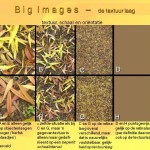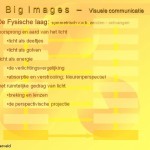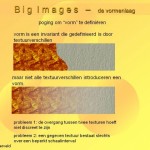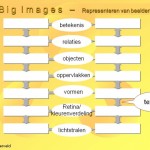Big Images – Stadium Generale
Website Big Images: http://www.studiumgenerale-eindhoven.nl/bigimages/
Assement Pending
As B3.1 student, I had to participate in an obligatorily Stadium Generale university college for 3 ECTS. I decided to choose for Big Images in order to become more proficient in analyzing visuals on an academic scale. I attended for the college every week, read the syllabus, made four home-exercises and the final exercise: contribution to the jigsaw project. From these activities I learned how to watch, how to describe and how to imagine. I learned to use academical founding to interpret pictures and visualizations and how to come up with an intersubjective describing. I learned the basic principle that images can be processed on eight levels: semantics, relations, objects, (3D) surfaces, shapes, texture, samples and physics. Semantics are the associations between the contents of the image and things outside the image, like the suggestion of the image. Relations concern the relationships between objects in the image (i.e. spatial relationships or gestalt-theory). Objects describes the difference at the level of their non-visual attributes (a round object = bowling ball, a planet, orange etc.). 3D Surfaces relates to the difference in 3D between (e.g., convex or concave, planar, steep, rippled, hollow, occlusion). A shape is a maximal region of constant texture. The shape layer allows us to distinguish for instance a circular disk and a square, oblong from compact and is often applied at optic illusions (2D only). A texture is the statistical distribution of features over groups of adjacent samples. This enables us to distinguishing sand from granite for instance. Samples or retinal-layer concerns samples (pixels, seeing the difference between background/isotropic and antistrophic detectors). Finally yet important the physical layer, which concerns light, spectra, reflection, absorption, detection.
Example slides
The knowledge gathered had to be applied in the homework and the contribution of the JigSaw project. Jigsaw is a website which shows comparable images of an image, based on the eight levels stated before. For the final contribution at least 20 images, 50 tags and 50 relations had to be contributes as student, in order to show the understanding of the framework. You can view the JigSaw project over here. For me as upcoming designer, this contributes to a better foundation to watch and describe images.



